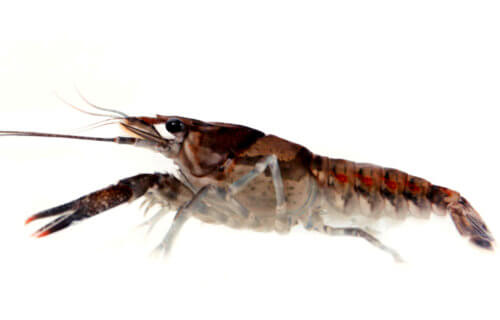GAINESVILLE, Fla. — Antidepressants and other medications may help patients overcome various conditions, but what happens when it’s time to dispose of our old pills? Often, these drugs find their way into the environment and waterways through improper dumping. Now, a new study finds antidepressants are having a serious impact on at least one species in nature — the crayfish. Researchers at the University of Florida say medications meant to calm humans down are leaking into rivers and driving crayfish crazy.
When these crustaceans come into contact with low levels of antidepressant medication, study authors find they behave in ways that make them more vulnerable to predators. For humans, these drugs lift the symptoms of depression and other mental health conditions. In crayfish, they actually make them more outgoing, but that’s not exactly a positive trait for them.
“Low levels of antidepressants are found in many water bodies,” says lead author Dr. Alexander Reisinger, an assistant professor of soil and water sciences, in a university release. “Because they live in the water, animals like crayfish are regularly exposed to trace amounts of these drugs. We wanted to know how that might be affecting them.”
Antidepressants lead to ‘bold’ behavior in animals
Along with improper disposal of medications into the environment, study authors say people taking antidepressants also excrete trace amounts of the drugs when they go to the bathroom. Those traces can enter the environment through reclaimed water or leaky septic systems. The team discovered that crayfish exposed to low levels of antidepressant medication behave more “boldly,” emerging from hiding more quickly and spending more time searching for food.
“Crayfish exposed to the antidepressant came out into the open, emerging from their shelter, more quickly than crayfish not exposed to the antidepressant,” explains co-author Dr. Lindsey Reisinger. “This change in behavior could put them at greater risk of being eaten by a predator. Crayfish eat algae, dead plants and really anything else at the bottom of streams and ponds. They play an important role in these aquatic environments. If they are getting eaten more often, that can have a ripple effect in those ecosystems.”
“Our study is the first to look at how crayfish respond when exposed to antidepressants at levels typically found in the streams and ponds where they live,” adds Alexander Reisinger.
The researchers achieved that by recreating crayfish’s natural environment in the lab, where they could control the amount of antidepressants in their water and easily observe the behavior of the crustaceans. Study authors placed the crayfish in artificial streams that simulated their natural environment.
The experiment exposed some crayfish to environmentally-realistic levels of antidepressant contamination, while a control group did not come into contact with the drugs. Researchers used a common type of antidepressant called a selective serotonin reuptake inhibitor (SSRI) in these tests.
Crayfish on meds get the munchies more often
To test how antidepressant exposure changed crayfish behavior, the team used Y-maze, which has a short entrance that branches into two lanes, like the letter Y. At the start of the experiment, researchers placed each crayfish in a container that acted as a shelter and then placed the shelter at the entrance to the maze. Scientists timed how long it took for the crayfish to emerge after opening the container.
If the crayfish emerged, they had the choice of the two lanes in the Y-maze. One lane emitted chemical cues for food, while the other emitted cues that signaled the presence of another crayfish. In comparison to the control group, crayfish exposed to antidepressants emerged from their shelters earlier and spent more time in pursuit of food. They tended to avoid the crayfish side of the maze, a sign that the levels of antidepressants used in the study didn’t increase their aggression.
“The study also found that crayfish altered levels of algae and organic matter within the artificial streams, with potential effects on energy and nutrient cycling in those ecosystems,” Alexander Reisinger reports. “It is likely that the altered crayfish behavior would lead to further impacts on stream ecosystem functions over a longer time period as crayfish continue to behave differently due to the SSRIs. This is something we’d like to explore in future studies.”
He adds there are steps people can take to reduce the levels of antidepressants and other pharmaceuticals in water bodies.
“The answer is not for people to stop using medications prescribed by their doctor. One big way consumers can prevent pharmaceuticals from entering our water bodies is to dispose of medications properly.”
The findings appear in the journal Ecosphere.
SWNS writer Stephen Beech contributed to this report.
